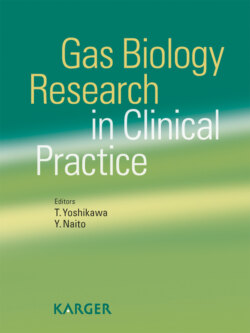Читать книгу Gas Biology Research in Clinical Practice - Группа авторов - Страница 25
На сайте Литреса книга снята с продажи.
Conclusions
ОглавлениеThe sources of intraluminal gas are air swallowing, intraluminal production, and diffusion from the blood. Five gases (N2, O2, CO2, H2, and CH4) account for more than 99% of gas passed per rectum. As shown in figure 2, greater amount of gases pass through the digestive tract per day than liquid and solid contents. There are geographical differences in gas metabolism (table 1). This suggests that impaired gas movement might be more closely associated with abdominal symptoms compared to liquid movement. Although it is unknown if increased and unequally distributed gases in the digestive tract are the key event in the pathogenesis of abdominal symptoms, intestinal gas metabolism might be one of the risk factors for developing various digestive diseases.
